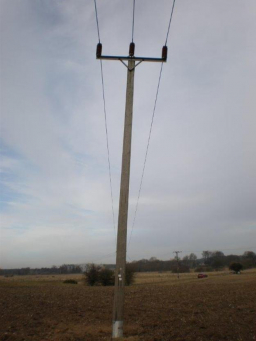The lengths
The lengths of the twelve poles form an Arithmetic Progression (A. P). If the third pole is 3m and the eighth pole is 5 m, find the
(i) Length of the first pole
(ii) Sum of the length of the poles
(i) Length of the first pole
(ii) Sum of the length of the poles
Final Answer:

Tips for related online calculators
Need help calculating sum, simplifying, or multiplying fractions? Try our fraction calculator.
Do you have a linear equation or system of equations and are looking for its solution? Or do you have a quadratic equation?
Do you want to convert length units?
Do you have a linear equation or system of equations and are looking for its solution? Or do you have a quadratic equation?
Do you want to convert length units?
You need to know the following knowledge to solve this word math problem:
algebraarithmeticnumbersUnits of physical quantitiesGrade of the word problem
Related math problems and questions:
- 8 wooden
 Eight wooden poles are used for pillars, and the length of the pillars is from an arithmetic progression. If the second pole is 2 meters and the sixth pole is in order 5 meters, find the difference between the sixth and seventh poles.
Eight wooden poles are used for pillars, and the length of the pillars is from an arithmetic progression. If the second pole is 2 meters and the sixth pole is in order 5 meters, find the difference between the sixth and seventh poles. - Arithmetic 80808
 The lengths of the sides of a right triangle form the first 3 terms of the arithmetic sequence. Its area is 6 cm². Find length of its sides.
The lengths of the sides of a right triangle form the first 3 terms of the arithmetic sequence. Its area is 6 cm². Find length of its sides. - Sequences AP + GP
 The three numbers that make up the arithmetic sequence have the sum of 30. If we subtract from the first 5, the second 4, and keep the third, we get the geometric series. Find AP and GP members.
The three numbers that make up the arithmetic sequence have the sum of 30. If we subtract from the first 5, the second 4, and keep the third, we get the geometric series. Find AP and GP members. - Subsequent 3427
 Find how many strings there are in the first row if there are 44 strings in the eighth row, and in each subsequent row, there are five more strings than in the previous row.
Find how many strings there are in the first row if there are 44 strings in the eighth row, and in each subsequent row, there are five more strings than in the previous row. - The sum 17
 The sum of the three numbers is -1. If we multiply the second number by 2, the third number by 3, and add them, we get 5. If we subtract the third number from the sum of the first and second numbers, we get -1. Answer the following: Represent the above
The sum of the three numbers is -1. If we multiply the second number by 2, the third number by 3, and add them, we get 5. If we subtract the third number from the sum of the first and second numbers, we get -1. Answer the following: Represent the above - Multiples of eight
 Find the sum of the first 25 multiples of 8.
Find the sum of the first 25 multiples of 8. - The terms
 The terms 1/64, 1/32, and 1/16 form a geometric progression (GP). If the sum of the GP is (2³6 – 2-6), find the number of terms.
The terms 1/64, 1/32, and 1/16 form a geometric progression (GP). If the sum of the GP is (2³6 – 2-6), find the number of terms.
